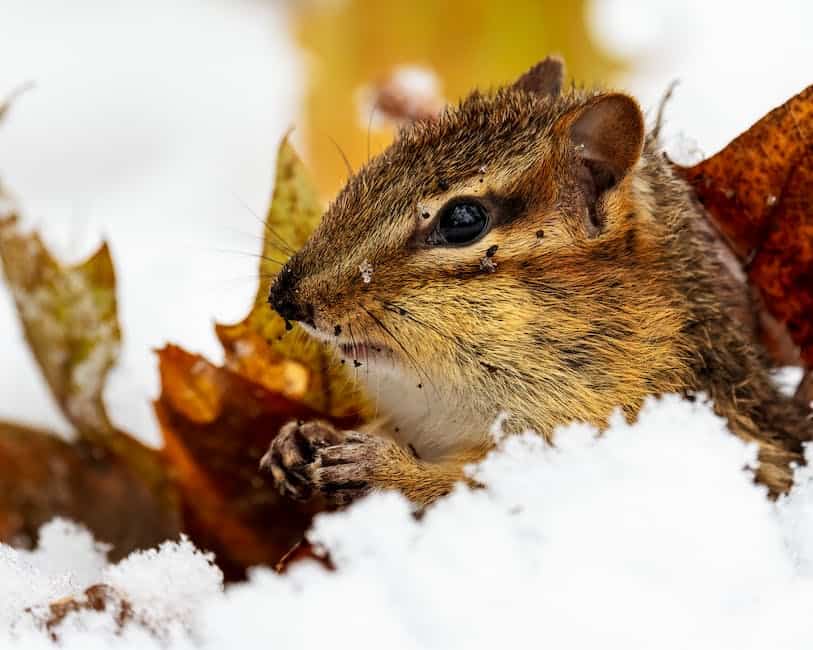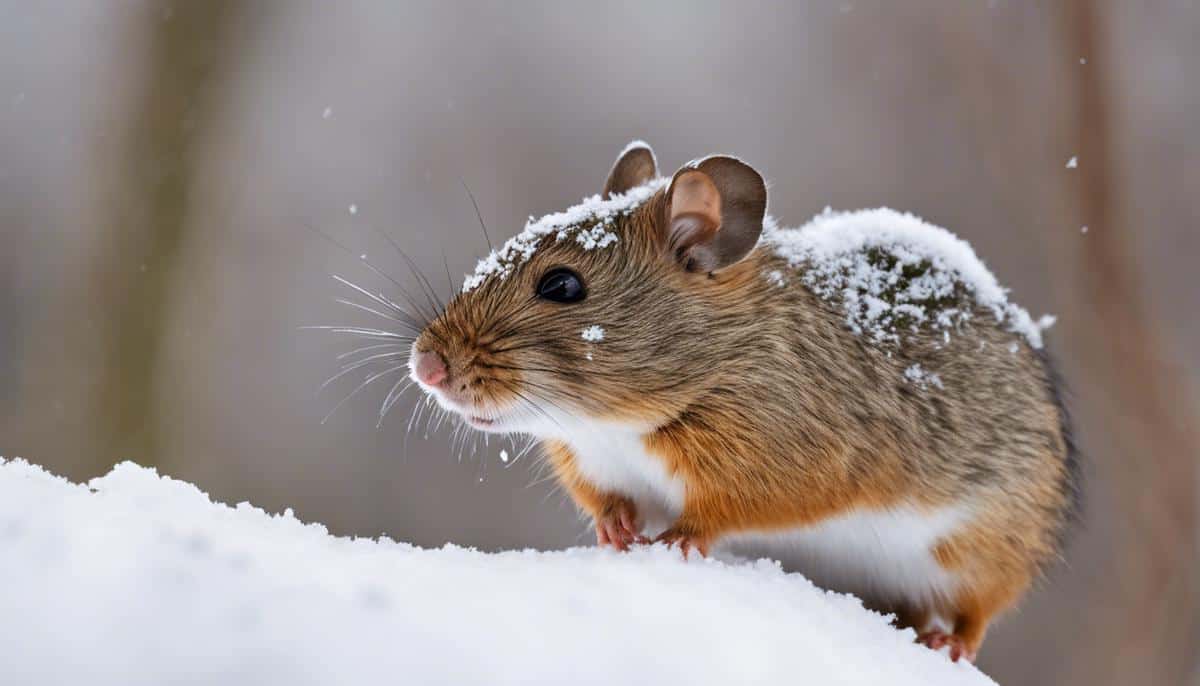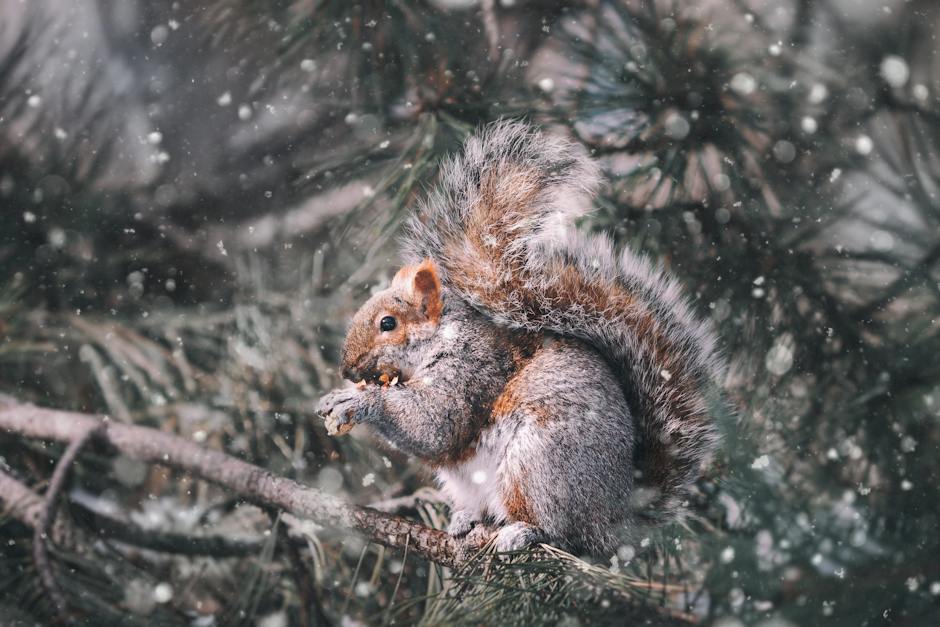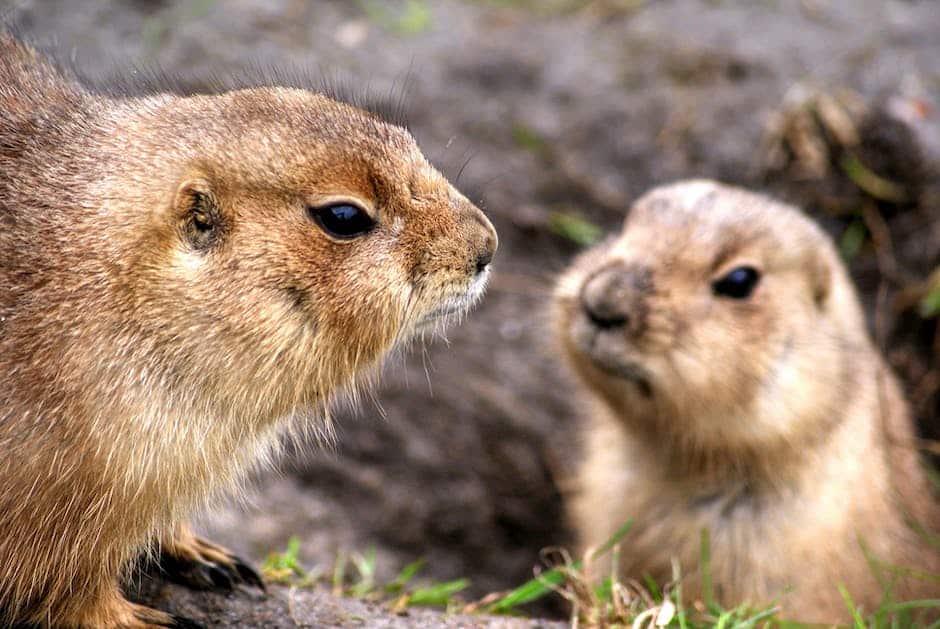
01 Dec Effective Rodent Control in Cold Weather: An Academic Perspective
As winter months draw near, the challenge of managing rodent pests mounts, triggering a surge in infestation levels within our homes and establishments. Understanding the behavioral adaptability of these creatures in cold weather, and their resultant heightened incursion into our spaces, is crucial for effective control. This essay explores the common types of rodent pests active during cold weather, the environmental factors influencing their activities, and their impacts on control strategies. It further delves into the practical control measures, preventive methods, and the importance of regular monitoring. Lastly, it sheds light on the promising future directions in the field of cold weather rodent control.
Identification of Common Rodent Pests in Cold Weather
The Impact of Cold Weather on Types and Behaviors of Rodent Pests: An Observation in Ecological Dynamics
The stark contrasts of Nature’s seasons can engender astounding alterations in the animal kingdom, manifesting in changes in species diversity, behavior, and overall ecosystem dynamics. These shifts can be especially salient in organisms of smaller stature, like rodents, whose survival strategies often nimbly dance with the changing rhythms of the natural world.
Transmutation in rodent behavior and species diversity during colder weather periods is partly a response to weather-driven alterations in habitat availability and food supply. As temperatures decline, many rodent species display a pronounced change in their activities, migrating towards warmer settings, often man-made structures, to endure frigid conditions.
Rats and mice, members of the Rodentia order, serve as compelling exemplars of these adaptive behaviors. The transition from outdoor foraging and dwelling to seeking shelter inside human habitats is a recurrent theme in rodent ecology during winter months. Many species, in fact, display modified breeding patterns in response to cold weather, with some displaying a marked increase in reproduction, ostensibly to increase survival chances for the species.
Another noteworthy behavioral adaptation in rodents during cold weather involves dietary changes. In warmer weather, rodents, such as squirrels and chipmunks, predominantly consume plant-based foods. However, during winter, the scarcity of such foods prompts these rodents to revert to a more omnivorous diet.
In addition to the behavioral adaptations that rodents exhibit, colder weather can also impact the types of rodent species observed in a given area. In regions with severe winters, typically smaller rodent species such as voles or shrews, may be more common than larger ones, as their small size and burrowing habits permit them to gain more substantial shelter from the frigid weather.
Nonetheless, these adaptions can magnify the potential for rodent-human conflict, primarily when rodents seek shelter inside human habitats, leading to heightened pest encounters. This increased interface can carry important public health implications, as rodents are known vectors of numerous diseases, some which can cause significant morbidity and mortality in human populations.
Cold weather can thus dramatically shape the ecological landscape, driving behavioral changes and species diversity shifts within rodent populations. Such alterations act as a testament to the adaptive resilience of these small mammals, while highlighting the importance of sustained pest management practices to assuage potential human-rodent conflict.
As we continue to study these patterns and responses, a deeper appreciation of the intricate weave of Nature’s tapestry reveals itself. Each behavioral shift, every altered interaction, serves as a poignant reminder of the complex dance between organisms and their environment, an endless melody spun on the loom of survival and adaptation.

Impact of Cold Weather on Rodent Activity
Cold Weather Impacts: Rodent Activity and Control Strategies
Rodents, as persistent and pervasive members of our ecosystems, equally hold importance in the field of pest management. In order to implement effective control strategies, understanding rodent behavior, particularly their response to weather changes, is paramount. Our previous exploration delved into the effects of cold weather on rodent behavior, their migration patterns, breeding, dietary preferences, species diversity, and interactions with humans. Having established these fundamental facets, it is now critical to delve deeper and dissect the transformation in rodent activity during colder weather, focusing on physiological adaptations, survival strategies, and the corresponding adjustments required in pest control approaches.
At the nadir of winter, a rapid decrease in ambient temperature demands that rodents modulate their behavior and physiology for survival. This cold-induced body temperature reduction, or torpor, is a fascinating physiological adaptation exhibited by numerous rodent species. Hibernation, another survival strategy employed by rodents such as the ground squirrels, is an extended period of torpor. While most species seek warm refuges, it is not unusual for some to brave the cold temperatures, owing to their ability to enter torpor spontaneously and lower their metabolic rate without a cost to their body mass or immune system.
In terms of pest control, these survival strategies pose a significant challenge. Despite the decrease in activity, rodents that exhibit torpor or hibernation tend to retreat to indoor spaces, underlining the need for year-round surveillance and control measures, especially in temperate climates. In addition, during these periods of metabolic dormancy, traditional pest management methods like ingestion-based poison baits prove inefficient, necessitating more focused strategies.
Cold weather also impacts rodents’ communication and mating patterns. In species like voles, a decrease in temperature leads to reduced scent marking, a critical element in territory establishment and mating behavior. This implies a potential drop in reproduction rates during cold weather, an aspect that could be leveraged in the design of control strategies.
Moreover, rodent pest control, primarily reliant on biological and chemical methods, must also adjust to the climate. Cold weather alters the efficacy of certain pesticides and may affect the results of biological control methods. For example, the activity scope of predatory animals could decrease corresponding to the diminished rodent activity.
Lastly, understanding rodent activity in cold weather necessitates an examination of their sensory adaptations used to navigate frosty landscapes. With the help of whiskers modified for sensing texture and temperature, rodents like the wood mouse continue foraging even under snow. Unearthing these sensory aptitudes could potentially assist in devising control strategies tailored to their sensory abilities.
Overall, it becomes increasingly evident from this examination that cold weather significantly shapes rodent activity, making its understanding elemental to effective pest management. With the changing climate patterns and the adaptive resilience rodent species have demonstrated, scientists and pest control practitioners alike must build upon this understanding, continuously conceptualise and modify strategies. The endeavour persists, to not only mitigate human-rodent conflict, but also ensure the balanced coexistence of all earth’s residents.

Modern Rodent Control Strategies Applicable in Cold Weather
Shaping the discussion towards modern manifestations of rodent control strategies that interplay with cold weather, the importance of scientific innovation is unequivocal.
As cold weather significantly impacts rodent behavior and physiology, pest management techniques must evolve accordingly.
One key area of development lies within rodent-specific formulations of pesticides. Recent advancements include anticoagulant baits that withstand freezing temperatures, crucial in maintaining their efficacy during the winter. Similarly, attention has been geared towards developing frost-resistant versions of synthetic pyrethroids, a class of highly potent rodenticides. These improvements are paramount in ensuring the persistent effectiveness of chemical control methods during cold weather.
In addition to improvements in pesticides, adaptation in trapping methods is crucial. Electromagnetic and ultrasonic devices are gaining traction as non-toxic and weather-resistant pest management solutions. These devices utilize the disruption of rodent communication systems through frequency modulations, proving increasingly effective against rodents during the winter months when their reliance on auditory and tactile cues for navigation is heightened.
Biological pest control leveraging rodent natural predators has also seen refinement. The introduction of predator species such as owls and predatory mites to targeted areas is proving an effective method of regulation, particularly during winter when other methods may falter due to temperature.
Another novel approach in rodent control involves the use of sterile male techniques, echoing advancements seen within insect pest control. Exposure to cold weather often promotes increased rodent mating behaviors, making this period a strategic opportunity to introduce sterile males into the population and ultimately disrupt the reproductive cycle.
Cold weather also catalyzes behavioral changes in rodents in terms of seek shelter. This has driven advancements in exclusion techniques with higher quality insulating materials and building designs that reduce possible access points, thereby limiting the potential for rodent intrusion during colder months.
Finally, remote monitoring systems have become a crucial part of modern rodent control, offering an effective way to track rodent activity during winter without the necessity for human presence. These systems often employ motion-activated cameras and trap sensors to provide real-time rodent data, proving particularly useful in frigid climates where routine manual checks may be hindered by harsh weather conditions.
In conclusion, scientific understanding of rodent behavior and physiology against the backdrop of winter weather patterns has spurred the development of modern rodent control strategies. These innovations are vital in ensuring the continued effectiveness of pest control campaigns in mitigating the unique challenges posed by cold weather. To ensure the harmonious coexistence of humans and rodents, and the preservation of ecological balance, further innovations in pest management strategies are absolutely imperative.

Role of Preventive Measures and Regular Monitoring in Cold Weather Rodent Control
The use of preventive measures and regular monitoring represents the crux of successful management of rodent infestations during cold weather. It appears undeniable that colder environments catalyze a degree of transformation within rodent habits and survival mechanisms, necessitating strategic adjustments in pest control endeavors.
Rodents, much like any organism, exhibit a high degree of strategic adaptability. As weather patterns veer towards the frosty end of the spectrum, these creatures have demonstrated incredible manifestations of physiological adaptations. Torpor, a state of decreased physiological activity leading to a reduction in body temperature and metabolic rate, is commonly observed. Some species even indulge in hibernation – a long-term state of inactivity during the winter. Understanding these adaptive tactics could prove pivotal in devising effective control strategies.
Pest control becomes deceptively complex during colder weather. One primary challenge lies in understanding the altered communication and mating patterns among rodents. Cold weather impacts their communication signals and mating patterns, often leading to an increase in indoor infestations. Precision is required in tracing these patterns, significantly enhancing the need for in-depth study.
However, a colder climate does present a particular paradox when considering pesticide application. Certain pesticides and biological control methods may inherently diminish in effect with a drop in temperature. Among rodents, there are sensory adaptations designed for navigating cooler landscapes, inadvertently making some traditional pest management methods less impactful.
Adaptations to pest control approaches are therefore required. For one, employing rodent-specific formulations of pesticides can significantly aid in targeted control. Investigations have also shown promise for frost-resistant versions of synthetic pyrethroids. These retain their efficacy even under harsh frosty conditions, bringing about a necessary evolution in the toolbox of pest control resources.
Technology is rapidly seeping into the pest control sector, providing solutions such as electromagnetic and ultrasonic devices for better pest management. These advancements accommodate the specific needs arising from the winter-specific behavior of rodents. Simultaneously, the usage of sterile male techniques, aimed at disrupting the reproductive cycle of rodents, can successfully countervail increased indoor infestations triggered by cold weather.
Natural predatory relationships can also be exploited for an eco-conscious approach to rodent control. Biological pest control, centred around the natural predators of rodents, seeks to leverage the food chain’s cyclic nature.
Exclusion methods have matured over the years, with advancements focusing on mitigating rodent intrusion during the winter months. Notably, remote-monitoring systems have found application in tracking winter-time rodent activity. These technological aids, combined with the diligent watch of pest control professionals, heighten the efficacy of the monitoring process.
In conclusion, the crux of efficient rodent infestation management lies in understanding the shifts brought about by cold weather in both rodents and the pest control methods employed. As the weather evolves, so too must the mechanisms meant to control this persistent nuisance. A blend of innovative technologies and classic pest control practices, tailored to the specifics of winter, emerges as the new vanguard against rodent infestations.

Photo by alexas_fotos on Unsplash
Future Directions and Research in Cold Weather Rodent Control
The future of scientific research in the field of cold weather rodent control evokes consideration of many pertinent aspects. Albeit the landscape of winter rodent behavior and control has been studied extensively, the unrelenting evolution of our environment necessitates a continuous adaption in our control methods. As we move forward, the next logical step in this exploratory journey leads us to the projection of digital technology in field surveillance and rodenticide delivery systems.
With the enhancement of field technology, an increasing reliance on automated wildlife cameras and ultrasonic sensors will mark the next era of rodent surveillance. Herein lays the possibility of early detection of rodent populations and their patterns before infestations reach critical mass, optimizing winter pest management. Likely, there will be further exploration into the efficacy of electronic devices in repelling rodents, which carries the potential benefit of non-lethal deterrent methods, sidestepping issues regarding toxicity and environmental impact.
In the sphere of rodenticides, we can expect further development in delivery systems that function efficiently in cold weather. Technological advancements may include capsules resilient to freezing temperatures, or adaptive application methods that prevent rodenticide from losing efficacy when exposed to cold. Moreover, optimisation in the targeting of specific rodent species, reducing off-target loss and collateral damage to non-target fauna, may be a reality in the foreseeable future.
Sterility techniques may take a front seat in the fight against rodent overpopulation, circumventing the conventional ‘poisoning’ method associated with rodenticides. Using genetic alterations to create infertile male rodents or disrupt the normal reproductive cycle aligns with more humane control methods, while simultaneously reducing the biotic resistance often associated with the heavy use of poisons.
It is crucial to note the significant role of climate change in shaping the future of this research field. With more erratic and severe winter conditions predicted, the adaptive behavior of rodents may change correspondingly. Variations in hibernation periods, food-seeking behavior, and their inherent physiological responses to the cold will possibly necessitate adaptions in our control strategies.
Lastly, as our society becomes increasingly sustainably-conscious, the demand for eco-friendly rodent control methods will likely surge. Natural predation, through the introduction of predators in rodent-prevalent environs, may gain traction, given its potential in maintaining a balanced ecological role. It bears underlining that choice of predator species requires meticulous consideration, to avoid the inadvertent creation of new problems.
In conclusion, scientific research in the field of cold weather rodent control is poised on the brink of significant advancements. These expectant changes manifest through the continual adaptation of existing methods and the advent of novel techniques. What lies ahead is a succinct interweaving of digital technology, genetic research, ecological principles, and sustainable ethos, as science, once again adroitly maneuvers itself to overcome the tirelessly adaptive nature of rodents.

As our world continues to evolve, so too must our methods of rodent control. Drawing from current trends, ongoing research, and scientific predictions, the future of cold weather rodent control is likely to see advancements that are more effective and environmentally friendly. From the greater use of integrated pest management strategies to the development of more sensitive monitoring tools, the field is ripe for innovation. Encouraging further research will be key to unearthing improved control measures and reducing the impact of rodent pests on our lives – particularly during the cold seasons when their presence is most pronounced. Thus, staying abreast of these developments holds the key to sustaining a rodent-free existence, even as the mercury dips.

